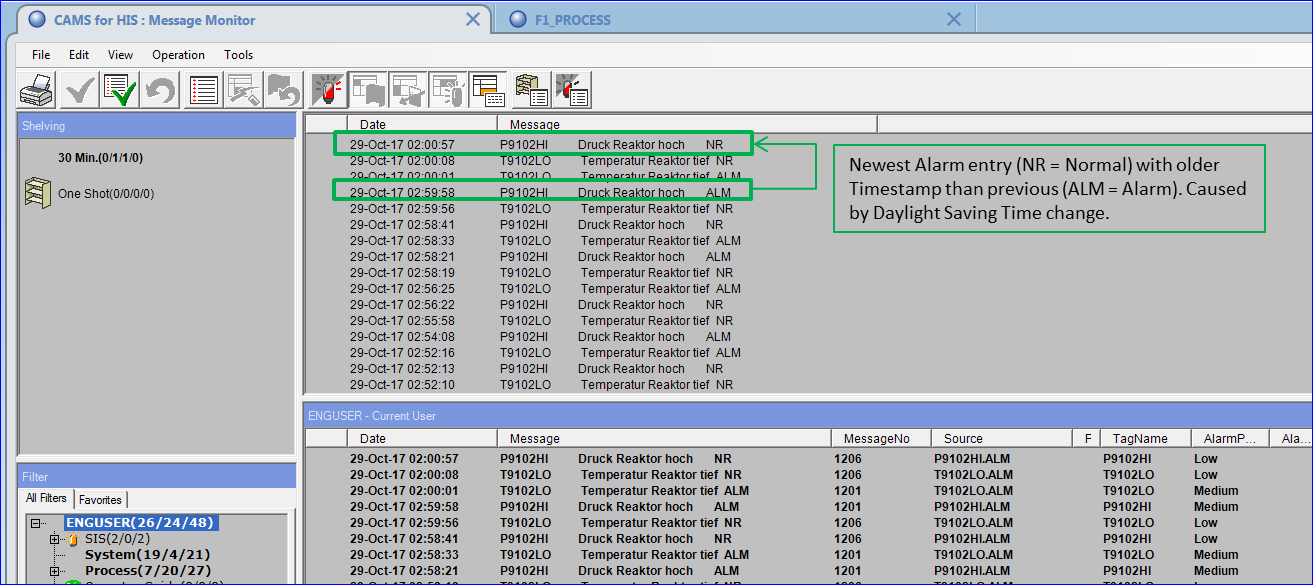A short history of (summer) time
Only a few more days to go until the clocks change over again from summer (or daylight saving) time to standard clock time (also referred to as winter time). I’d like to take a closer look at summer time in today’s post. When was it first introduced and why? Does it still serve a purpose today? And above all, what impact does it have on time recording in process control systems or in the age of big data?
How it all began
Back in the 18th century, people’s lives changed radically, among other things due to the discovery of electricity. Getting up when the cock crows and going to bed at sunset had become bygone habits, and especially in the big cities abundant nightlife was already leading to considerable wasted energy. Benjamin Franklin described this situation as long ago as 1784 in the “Journal de Paris”. However, his suggested remedy – “early to bed and early to rise” – never really caught on (again). The introduction of a seasonal time shift was repeatedly discussed by various scientists in the course of the next few decades.
Yet it wasn’t until 1916 that summer time was introduced for the first time in Germany during World War I. The aim was to support the energy intensive “battles of materials” which were typical of the Great War by cutting down on lighting on long summer evenings. After the war was over, Germany abolished summer time again in 1919 (in German).
Ever since then, daylight saving time has been introduced, abandoned and brought back again in a multitude of countries. Today, the majority of states in the temperate zones live with moderate seasonal variations in the length of the daytime period. The equatorial and polar regions are exceptions. Whereas the daytime period hardly changes at the equator in the course of the year (+- 20 to 45 minutes), the difference near the poles is more than six hours.
| Regional variations in sunrise times | ||
| Region / place | Annual variation in sunrise time | |
| Equator | +- 20 min. | |
| Flensburg (Germany) | +- 2.5 h | |
| North / South Pole | +- 6 h | |
Does summer time really save energy?
One of the main arguments for introducing summer time was the reduced energy consumption because less lighting is needed on summer evenings. This theory has persisted stubbornly to this day, even though it has been clear for a long time that the savings (if any) are only minimal. Indeed, the need for extra heating in the fall as soon as the evenings grow cooler is thought to more than cancel out the negligible effect of less lighting. The findings are inconclusive.
Today, summer time is used in almost all Central European countries. The prime motivation here, however, was to establish uniform time rules across the entire economic area.
Summer time, dates, timestamps – no problem for automation systems?
Does summer time have any impact on dates, timestamps etc.? The amount of information which is recorded nowadays is truly awesome. Each data point (or data record) is normally given a timestamp instantly. There are several different components in any automation system (HIS, FCS, PLC) whose job it is to record events and impress their own timestamp on them. Synchronizing these various systems tends to be more of a challenge than coping with time zones or daylight saving time. If a particular event (such as a sudden pressure drop in a reactor) triggers an incident in a chemical plant, you want to know afterwards which of the umpteen alarms was set off first. Every millisecond matters. Syncing your individual systems (e.g. with SNTP – Simple Network Time Protocol) is a key priority, in other words, as is making sure each timestamp is only used once in the source system and then passed on “as is” (e.g. via OPC AE – OLE for Process Control Alarm&Events).
Apart from this, summer time does not actually present any insurmountable difficulties. Data is generally stored with a timestamp in UTC format (Coordinated Universal Time, formerly also GMT (Greenwich Mean Time)). The display format is then simply calculated according to the time zone which is used, i.e. Central European Time (CET) in Germany in winter or Central European Summer Time (CEST) in summer. Even sending data to other time zones is not a problem. UTC is UTC everywhere!
Daylight saving time change creates havoc in control rooms
We’re normally not even aware of the time changing because it always takes place at 2 a.m. on a Sunday morning (the last Sunday in March and October in Germany).
Yet what does this mean for the control room of a process plant, for instance? In March one whole hour is lost whereas in October the same hour occurs twice. At 2:59 a.m. the time indicated jumps to 2:00 a.m. So what happens to an alarm that is triggered at exactly 2:59 a.m. CEST but disappears again two minutes later at 2:01 a.m. CET? Only the time is displayed in the alarm list and not the time zone.
Are alarms output in the right order? The answer is as simple as it is confusing. Although alarms that occur directly after the time change are actually in the right order, they have an older timestamp (up to one hour different) than previous alarms (see Figure 1). The reason for this is as follows: the order in which alarms are displayed is based on UTC but the time which is shown corresponds to Windows time, which is normally set to CEST or CET.

Summer time – has it become obsolescent?
Thus, although summer time has no real economic benefits, it nevertheless has to be coordinated and organized. We no longer have to go round changing every clock in the house; even so, many employees still get to work too early or too late every year following the changeover. Almost unnoticed by the public at large, the German Christian Democratic Party voted a few years ago in 2014 to press for the abolition of summer time (in German). Nothing much has happened since, and it probably never will.
I personally look forward to the end of March, when the evenings suddenly last much longer, and I dislike the dark days that begin in October. In the automation world, too, daylight saving time is not a (major) problem. We can (and must) live with the one hour that occurs twice in October. And if that bothers you too much, all you have to do is show everything in UTC. In any case, that’s what’s used to evaluate the data.
Would you like to share some of your own experiences in connection with daylight saving time – whether in your private life, at work or in your plant? Do you think the benefits outweigh the drawbacks?
We’d welcome the opportunity to discuss this with you! Feel free to write a comment.




